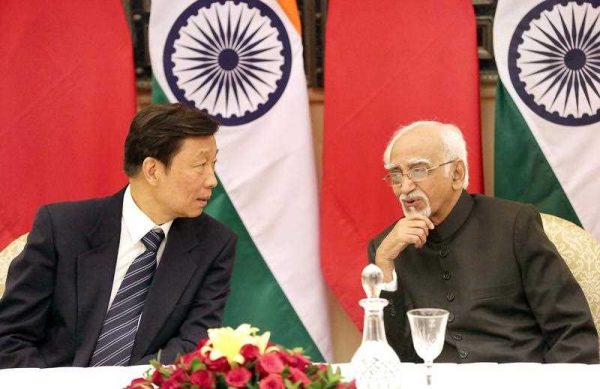Indian Prime Minister Narendra Modi’s reciprocal visit to China in May 2015. What explains these recent burgeoning relations between these two former adversaries?
The number of high profile visits, six within two years, clearly signifies that both countries have started attaching greater importance to the bilateral relationship. India and China cannot afford to ignore each other if they wish to rise in influence at the international level.
While India and China have different reasons to cooperate with each other, the central objective remains ‘coexistence’. Under Modi’s leadership, India is looking towards China to attract greater investments, which have the potential to play a significant role in his ‘Make in India’ campaign. India is emerging as an important destination for Chinese foreign direct investment. During President Xi Jinping’s visit to India, China pledged to invest US$20 billion in India. And China is now India’s second-largest trading partner after the United Arab Emirates.
For China, the reasons for working toward greater cooperation with India are numerous and diverse. China’s maritime territorial disputes in the East and South China Seas, as well as continuing tensions over the interpretation of 20th-century history, makes it difficult for China to be assured of a stable, long-term relationship with either Japan, the Philippines or Vietnam. In a situation where the United States was also to be drawn into a potential conflict, China wants to ensure that India will not align itself with the United States and the other claimants in the dispute.
Engaging India is one way to avoid an anti-China coalition in the Asia Pacific. Xi’s recent meeting with the Taiwanese President Ma Ying-jeou in Singapore, the first-ever meeting between leaders of the two countries, may also be a step in this direction.
The regular exchange of high-level visits between Chinese and Indian leaders may also be perceived as a way of convincing India to get on board with China’s proposed ‘One Belt, One Road’ (OBOR) initiative. Chinese leadership has been advocating the OBOR to India since 2013, but so far India has been reluctant to endorse the initiative.
China is interested in convincing as many countries as possible of the mutual benefits accruing from OBOR in order to promote the idea of China as a great and benign power, not only among regional countries but also globally. If the maximum number of countries possible recognise the benefits of OBOR, it will also strengthen China’s economic and political positioning.
Given that OBOR does not seem to be a purely economic initiative, India has been reluctant to endorse the project. This is mainly due to the lack of transparency. Clearly, transparency and inclusiveness are prerequisites for the success of OBOR. Though significant inroads have been made, China is still expected to provide the details of sources of funding and the potential stakeholders in the ambitious project. It would alleviate India’s apprehensions if China carved out a transparent and open blueprint for OBOR.
To further complicate matters, China–Pakistan cooperation under the framework of OBOR is worrisome to India. China has already announced investments worth US$46 billion for the China–Pakistan Economic Corridor (CPEC). This is currently the only project under OBOR that is underway. India’s reservations are not simply about the burgeoning cooperation between China and Pakistan. What is worrying for India is that the CPEC passes through Pakistan-occupied Kashmir (PoK), which is still a disputed territory between India and Pakistan. CPEC, once fully operationalised, will link Gwadar to Kashgar through a 3000-kilometre network of pipelines, railways and motorways. India is concerned that this will not only increase Chinese presence near the Indian border, but also that Chinese cooperation in PoK under the framework of OBOR also implies that China is a potential player in the prolonged India–Pakistan territorial dispute.
But the most significant remaining problem of all is their continued differences over their shared boundary. China seems reluctant to resolve the boundary dispute with India any time soon. India–China symmetric relationship coupled with the presence of Tibetans in India may be cited as important reasons for this. Still, leaving it for the next generation to achieve a resolution will not bring about long-term peace in India–China relations. It is clear that without resolving the more than 50 year old dispute, apprehensions and mutual distrust will continue to occupy centre stage.
India and China are rapidly emerging as two formidable powers in Asia. It is time for both India and China to seriously focus on resolving on persistent problems in the relationship so as to pave the way for deeper cooperation in the future. Working toward assuaging differences and focusing on areas for pragmatic cooperation are critical to both India and China’s national and economic interests.
Sana Hashmi is Associate Fellow at the Centre for Air Power Studies, New Delhi, and a Research Scholar at Jawaharlal Nehru University.

